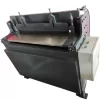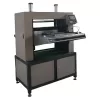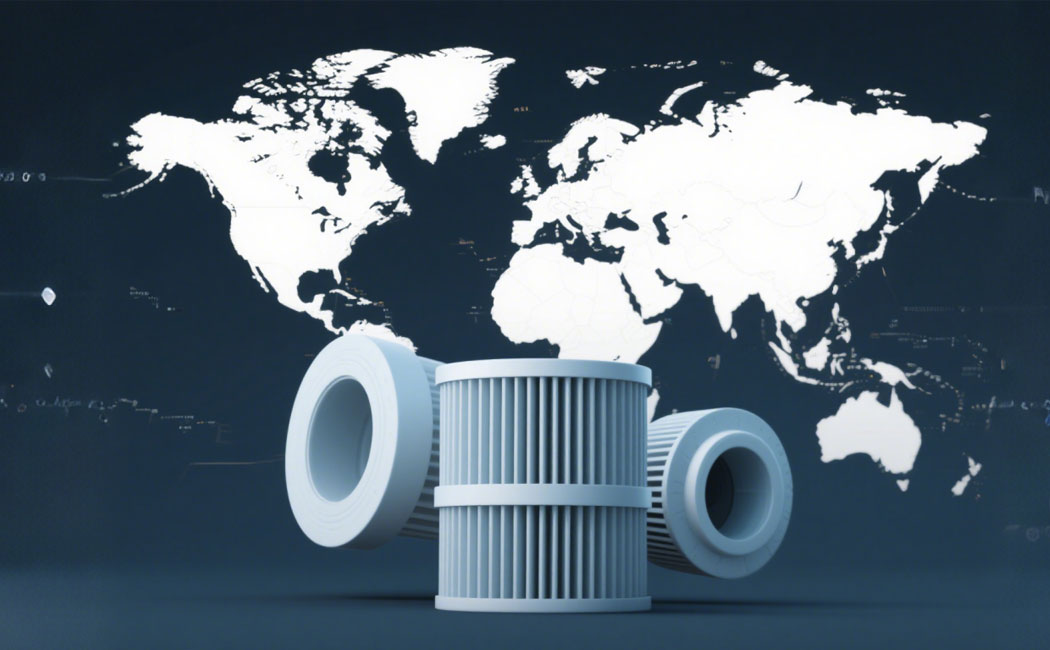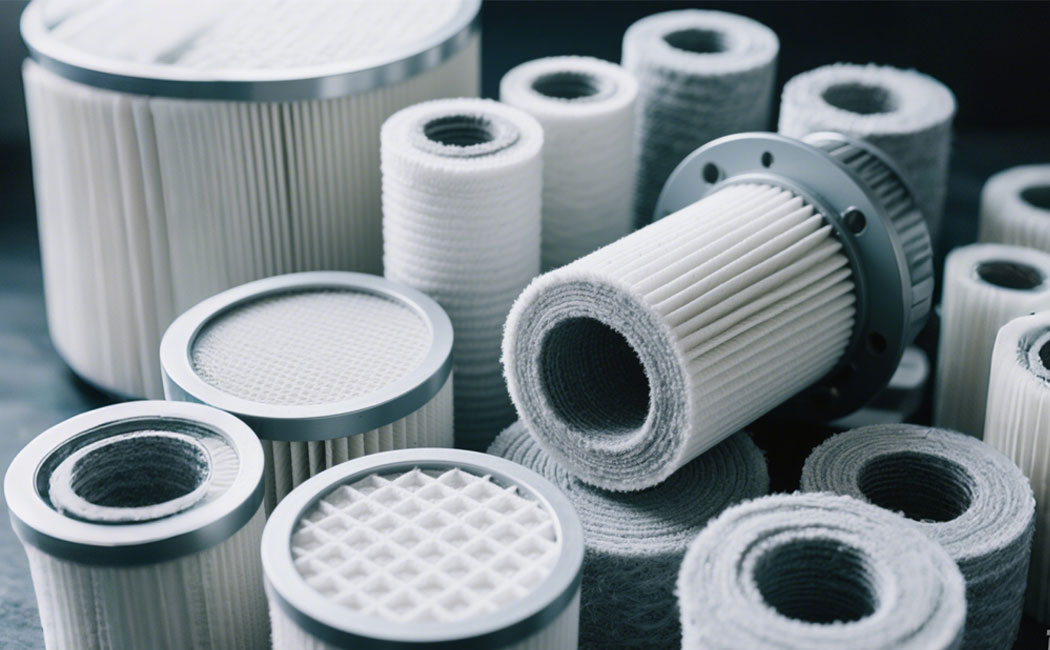What makes the mesh bite machine become the final solution for filtering equipment and metal processing?
In fast-paced manufacturing industry, demand for high-efficiency, accurate and labor-saving machinery is increasing, especially in the fields of metal connection and filtration. For the enterprises here, it is very important for reliable filter machinery to reduce costs and provide consistency at the same time. Enter the Filter Mesh Nipping Machine: a specialized filter machinery revolutionizing metal plate connections, boasting unmatched precision over traditional methods. What is it, how is it different from other sewing machines, and what benefits does it have for you? This guide covers everything and is supported by data, specifications and opinions.

What Is a Filter Mesh Nipping Machine?
The Filter Mesh Nipping Machine is purpose-built to connect metal plates via precise nipping. Unlike generic seaming machine models, it’s tailored to metal mesh production, creating tight, seamless joints that resist wear and pressure.
Its working principle is to apply a controlled and uniform pressure to the edge of the metal plate, and it can be bonded without welding, adhesive or hand hammering. According to China Machinery Standardization Committee (the highest authority in the industry), it’s classified as “special filtering machine” for filtering related parts and metal products that need safe connections.
Key design: two types (inner/outer bite). This adapts to different needs-from small diameter filters to large security nets. The external occlusion model (the focus of this guide) is suitable for most standard metal tasks.
Unique Advantages of the Filter Mesh Nipping Machine
What is the difference between this sealing machine and other filtering equipment? Core advantages are verified by specifications and tests.
1. High precision joint processing
Its greatest advantage is tight and seamless seam. According to the mechanical test in China, the clamping accuracy reaches 0.05, which is 30% higher than industry averages of manual/semi-automatic filtering machinery. This ensures flawless, strong joints, preventing leakage or corrosion in high stress uses (e.g. Industrial filters).
2. Transmetallic diversity
Unlike single-metal machines, this filter equipment works with perforated metal, expanded metal, aluminum plates, and other common materials. This reduces the need for multiple machines, thereby simplifying production and reducing costs.
3. Labor saving Design
Traditional manual clamping is labor-intensive and requires great effort. The machine cuts labor intensity by 60% (China’s Metal Processing Assoc). Automatic clamping reduces the risk of fatigue/injury of workers; 8-10 m/h speed boosts output, lowering operational costs.
Detailed technical parameters
Key specifications (manufacturer’s data) Evaluate whether this filter machine meets your requirements.
| Specification Parameter | Details |
| Type | Outward bite |
| Machine Width | 610mm |
| Material Thickness Range | 0.4-0.8mm |
| Applicable Diameter | 90-400mm |
| Bite Width | 4mm (fixed for consistency) |
| Place of Origin | Hebei, China |
| Warranty Period | 1 year (material/workmanship) |
| Packaging Details | Shrink wrap + wooden box |
| Processing Speed | 8-10 meters per hour |
| Nipping Precision | ±0.05mm |
| Compatible Materials | Perforated metal, expanded metal, aluminum plates, other metal sheets |
Note: All specifications conform to GB/t 23584-2009 of China.
Major application scenarios
This machine shines brilliantly in two core industries, providing the greatest value.
Filtering Industry
As a key filter machinery, it produces filter elements, nets and assemblies.
· Water Treatment: Waste water/drinking factory uses its net to remove impurities. According to the International Water Association (https://www.iwa-network.org/) , the efficiency of these grids is 98%, while that of manual versions is 85%.
· Chemical filtration: seamless joints to prevent chemical leakage in factory.
· Air Filtration: It makes metal air filter machine for industrial use, stopping dust bypass.
Step-by-Step Guide to Operating the Machine
The operation is simple, and the best effect can be obtained through five key steps.
Step 1: Prepare Materials
· Select metal sheet (0.4-0.8mm thick and 90-400 in diameter).
· Clean dust/oil stains (pollutants can damage quality).
· Cut sheets to size, ensuring straight edges for alignment.
Step 2: Adjust Settings
· Turn on the machine and open the control panel.
· Confirm 4 mm occlusal width; Adjust pressure according to the material:
Soft materials (e.g., Aluminum): reduce the pressure to avoid deformation.
Harder metals (e.g., Stainless steel): increase the pressure for tight connection.
- Align the guide rail so that it is aligned with the edges of the plate.
Step 3: Locate the paper
· Put two metal sheets on the workbench, align the edges and press them in.
· Fix it with built-in guides rail (dislocation will lead to uneven joints).
· Double-check alignment with a ruler/caliper.
Step 4: Begin to clamp
· Press start—the machine moves along the edges, applying consistent pressure.
· Monitoring wrinkles/cracks: If there is a problem, pause for adjustment.
Step 5: Check the Output
· Remove connected thin plate and check the joint with a caliper (4 mm bite width, accuracy of 0.05 mm).
· By pulling to test tightness, there should be no separation.
· If quality meets standards, continue; If necessary, repeat the above steps to make adjustment.
Frequently Asked Questions
Q 1: Compared with other sewing machines, how is this one?
A 1: Unlike generic seaming machine models (for non-metals or low-precision joints), it’s specialized for metal plates in filtration/processing. It provides better accuracy (0.05mm versus 0.15mm), faster speed (8-10m/h versus 3-5m/h) and more versatility (source: China Machinery Standardization Committee).
Q 2: Can it handle materials with a thickness other than 0.4-0.8 mm?
A 2: No, the thinner metal sheet may tear. Please contact the manufacturer to obtain customization options.
Q 3: What does the 1-year warranty cover?
A 3: Covers material/workmanship defects, not damage from misuse, impact, or non-compliant materials. Including technical support and spare parts.
Conclusion: Why It’s a Must-Have Filter Equipment
As filter machinery demand grows, the Filter Mesh Nipping Machine stands out for reliability, efficiency, and cost-effectiveness. Its accuracy, versatility, labor-saving design and user-friendliness solve the main challenges faced by manufacturer, and are supported by standards and data.
Whether you are a small enterprise with streamlined production or a large enterprise with improved quality, this sewing machine can provide: lower labor costs, faster cycles and consistent seams. With a one-year warranty and mature performance, it’s an investment in long-term productivity.
Share:
Categories
- blog(46)
- Industry news(3)
- Technique articles(43)
Recent Posts

What is the melt filter trimming machine ...
11/20/2025 Comments Off on What is the melt filter trimming machine and how does it enhance the filtration system?
What is a Melt Filter Shrinking Machine ...
11/18/2025 Comments Off on What is a Melt Filter Shrinking Machine and Why is it Essential for Filter Manufacturing?
What is a melt filter extruder and ...
11/13/2025 Comments Off on What is a melt filter extruder and how does it enhance your filtration system?






